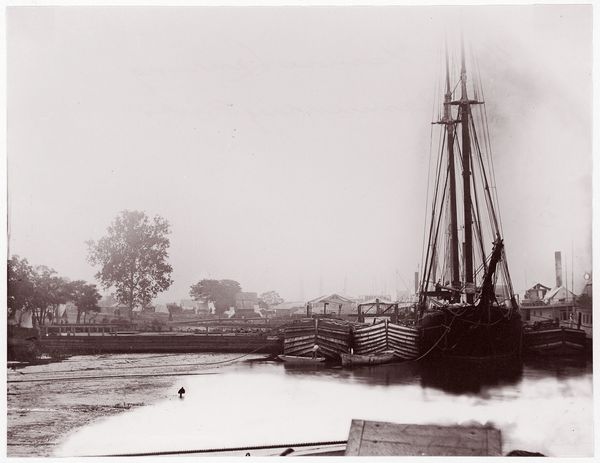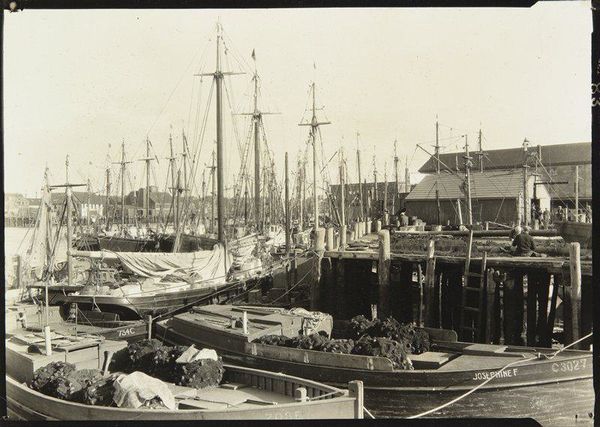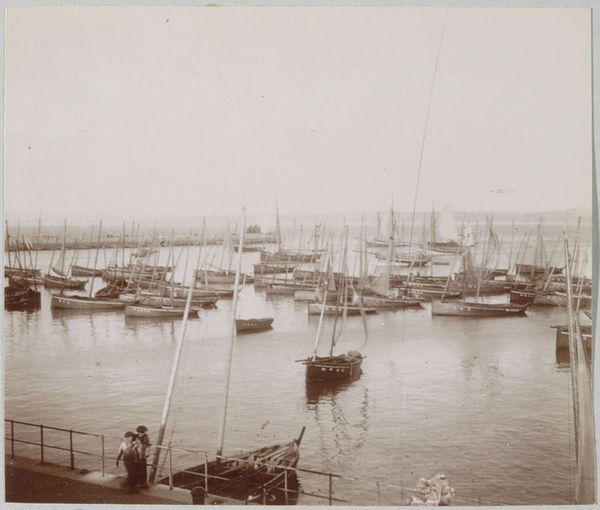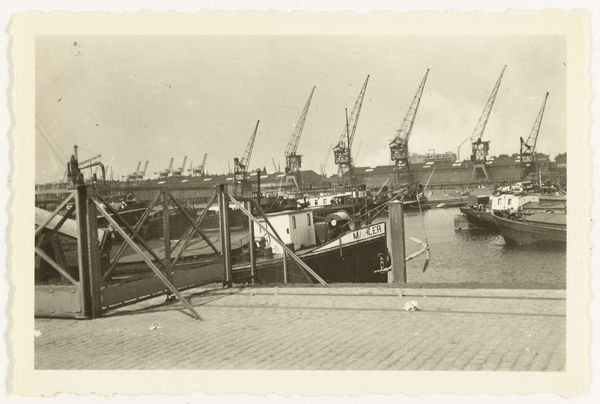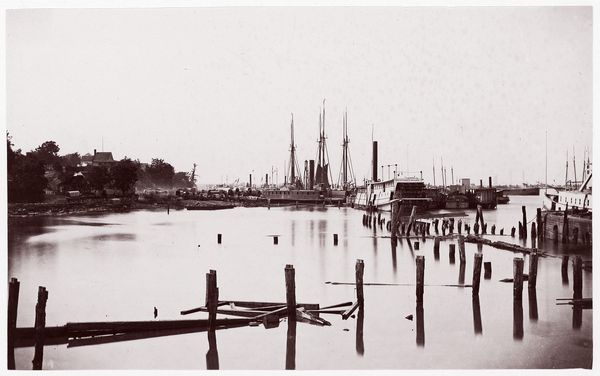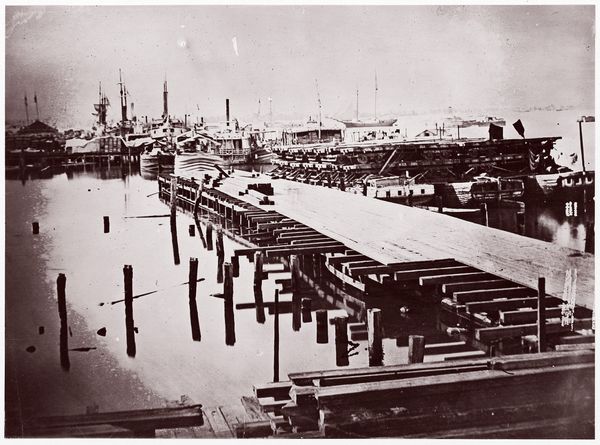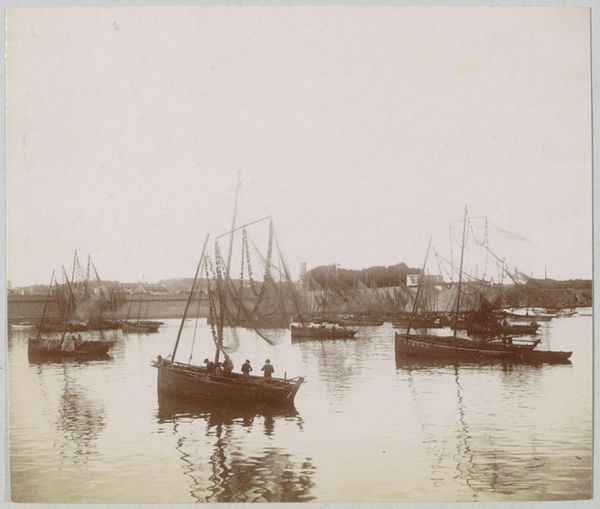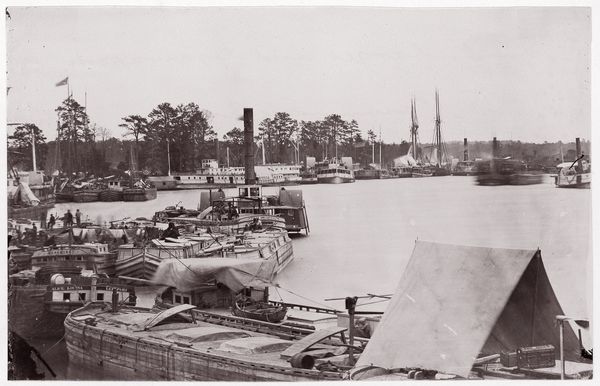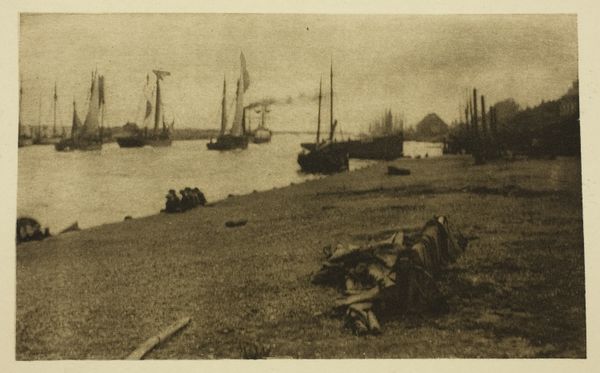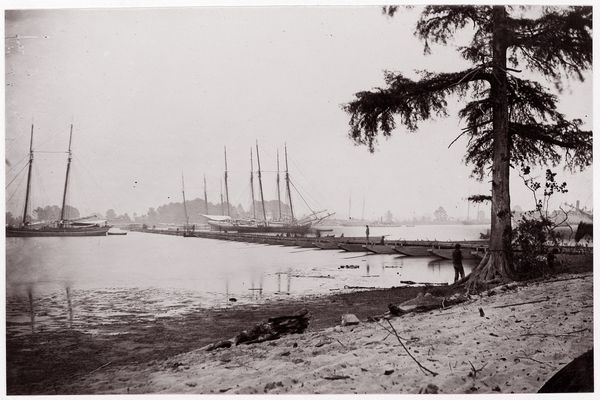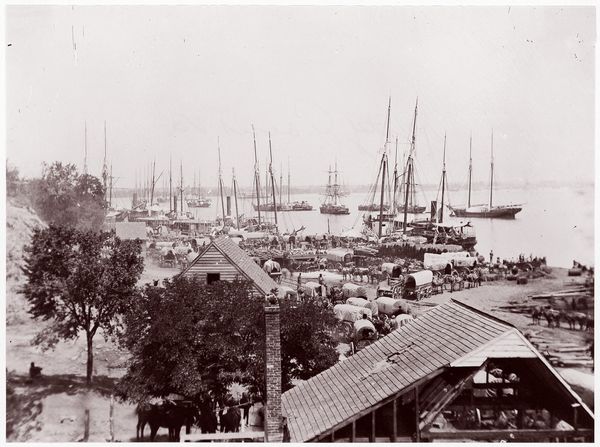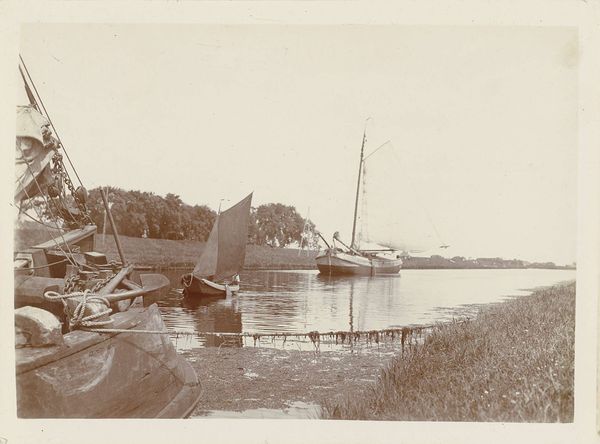![[Wharf and Transpors, City Point, Virginia] by Andrew Joseph Russell](/_next/image?url=https%3A%2F%2Fd2w8kbdekdi1gv.cloudfront.net%2FeyJidWNrZXQiOiAiYXJ0ZXJhLWltYWdlcy1idWNrZXQiLCAia2V5IjogImFydHdvcmtzLzg0N2Q2ZGZkLWU5MmEtNDBjNS1hMzlkLWQwNGE3MzQzZDVkZC84NDdkNmRmZC1lOTJhLTQwYzUtYTM5ZC1kMDRhNzM0M2Q1ZGRfZnVsbC5qcGciLCAiZWRpdHMiOiB7InJlc2l6ZSI6IHsid2lkdGgiOiAxOTIwLCAiaGVpZ2h0IjogMTkyMCwgImZpdCI6ICJpbnNpZGUifX19&w=3840&q=75)
[Wharf and Transpors, City Point, Virginia] 1861 - 1865
0:00
0:00
print, photography, gelatin-silver-print
#
boat
#
black and white photography
# print
#
war
#
landscape
#
photography
#
gelatin-silver-print
#
monochrome photography
#
monochrome
Copyright: Public Domain
Curator: This is Andrew Joseph Russell's "Wharf and Transports, City Point, Virginia," a gelatin silver print taken between 1861 and 1865, now held at The Metropolitan Museum of Art. Editor: Immediately, I feel this sense of decay and industry intertwined. It's like looking at a ghostly photograph—there's something melancholic and undeniably beautiful about it, this scene with those worn wooden docks reflecting back the skeletal masts of boats. Curator: The image provides crucial insight into the infrastructure and logistics of the Civil War, particularly the Union Army’s supply operations. City Point served as a vital military depot. I consider the environmental cost of conflict represented by the stark landscape, mirroring themes of exploitation. Editor: Exactly! You see that intense activity along the shore but sense a lack, too? Like this bustling port relies on an almost brutal modification of the landscape, turning it into a flat surface of labour and exploitation. It almost feels wrong to find beauty, but those subtle reflections soften it a little... like it gives that bleakness a layer of quiet introspection. Curator: Right. The photograph implicitly highlights the racialized nature of labor during the war as enslaved people were often forced into the kinds of work shown here, further underscoring the picture’s complex politics. We have to contextualize Russell's documentation in terms of wartime propaganda and representation. Editor: So true, so true...It’s amazing how one frame can whisper about power and labor. Thinking of the enslaved bodies who moved the materials filling the boats—they're unseen in the shot, and that emptiness, that haunting omission...it really shapes the narrative, don't you think? Like a photograph filled with ghost ships carrying invisible ghosts... Curator: Yes. I think, ultimately, it invites a necessary critical analysis. It allows us to see a portrait not just of infrastructure but of societal imbalance. Editor: It’s that beautiful, terrible paradox that holds me...I feel deeply disturbed, yet strangely grateful for having had the chance to really see.
Comments
No comments
Be the first to comment and join the conversation on the ultimate creative platform.

